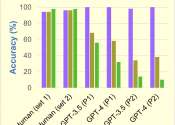With inspiration from Tetris, researchers develop a better radiation detector
The spread of radioactive isotopes from the Fukushima Daiichi Nuclear Power Plant in Japan in 2011 and the ongoing threat of a possible release of radiation from the Zaporizhzhia nuclear complex in the Ukrainian war zone ...
Apr 10, 2024
0
24









